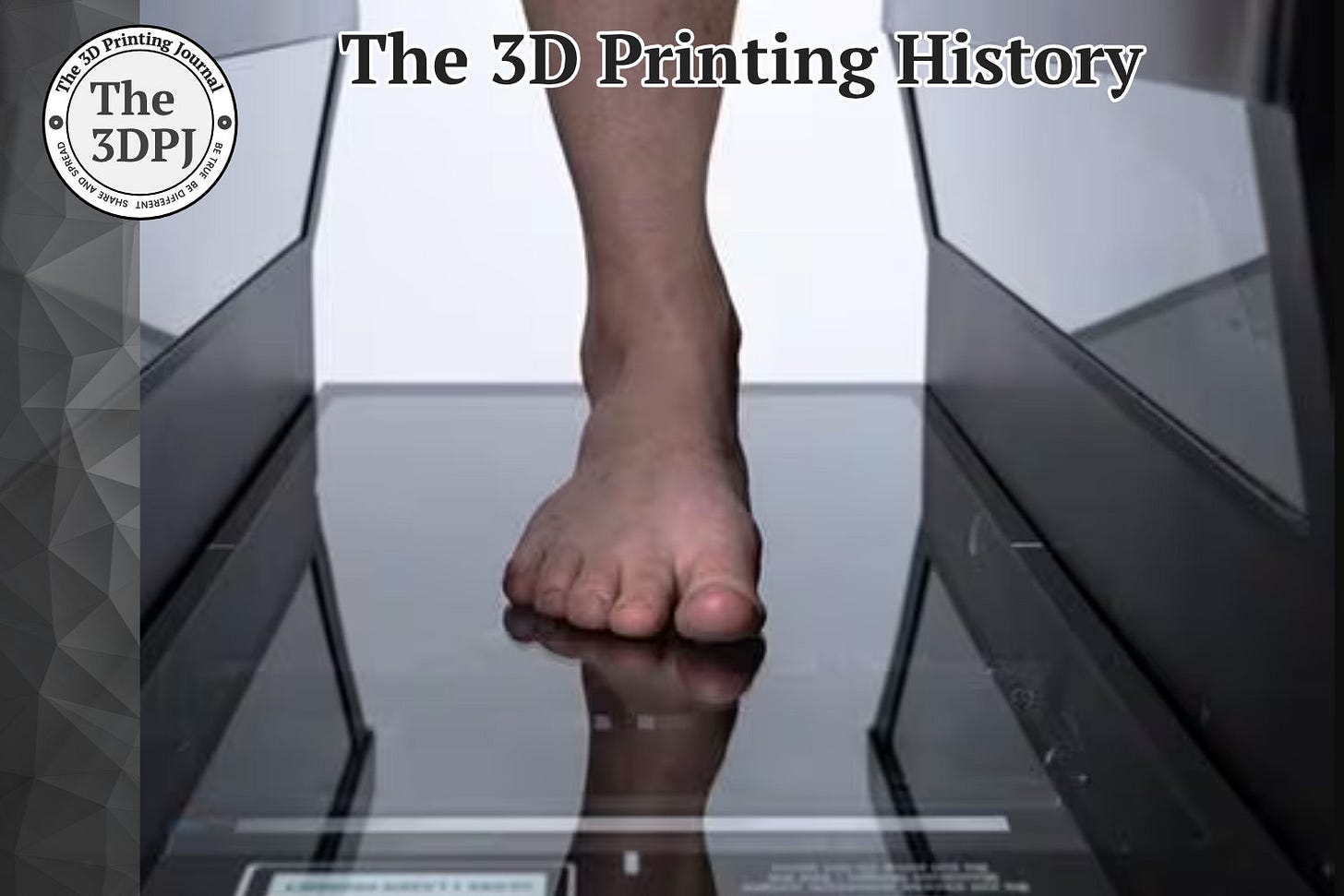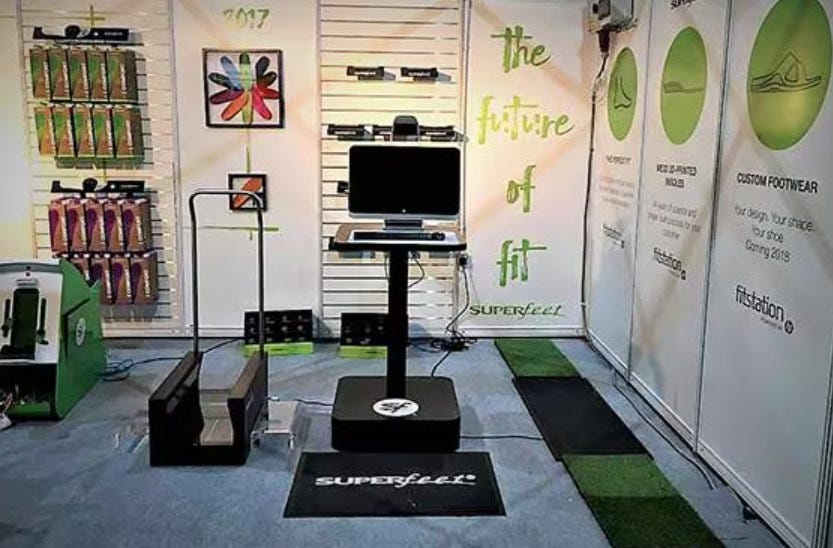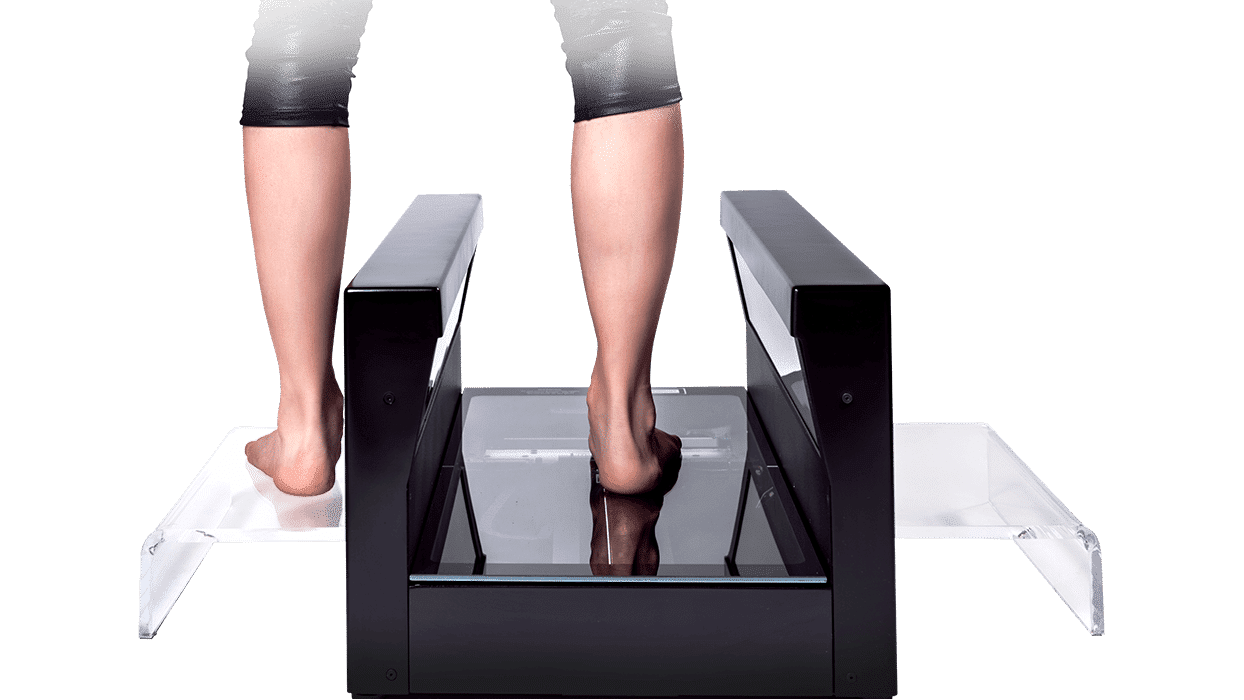
09-07-2017: HP Inc. announced FitStation powered by HP
It was a platform designed to deliver custom-fitted footwear through 3D scanning, dynamic gait analysis, and AM
On September 7, 2017, HP announced its entry into the footwear industry by presenting FitStation powered by HP. The platform aimed to produce personalized footwear and insoles based on detailed measurements of the users' feet. FitStation combined advanced 3D scanning technology, gait analysis, and 3D printing based on the proprietary Multi Jet Fusion technology, which had been officially launched just a few months earlier.
Unfortunately, despite collaborations with several footwear brands worldwide, the platform did not gain the popularity that HP had hoped for. It was quietly discontinued, and HP shifted its focus to manufacturing collaborations with selected footwear manufacturers.
Large tech corporations often pursue numerous innovative projects simultaneously, but only some survive and become permanent offerings. Each of these projects garners significant attention during its launch, accompanied by high initial hopes. In terms of additive manufacturing, HP has heavily invested in its proprietary production technologies—Multi Jet Fusion and Metal Jet—while also releasing several side projects related to “3D.” One such project, discussed in July, was "Sprout," and another was "FitStation."
How did it work?
FitStation used 3D scanners to create precise, three-dimensional models of feet. The system then analyzed the user's gait, recording foot pressure, weight distribution, and other biomechanical parameters. Based on the collected data, FitStation created custom orthotic insoles and footwear that perfectly matched the user's foot shape and specific movement needs.
Let’s be honest—FitStation was not intended to revolutionize the footwear industry; it was meant to validate the relevance of MJF and the 3D scanning technologies developed by HP. Of course, the platform's market success was also a goal, but from the beginning, the focus was on advancing proprietary manufacturing and design technologies.
Ultimately, the project did not revolutionize the industry but significantly contributed to popularizing additive manufacturing in the production of various footwear components, as well as the MJF technology itself. HP still collaborates with footwear companies like Brooks Running, supporting them in producing their proprietary designs.
And according to the "I Market Law of AM" - just as MJF technology helped advance the technological aspects of the footwear industry, it did not allow HP to establish a real presence in the footwear market.
Source: www.hp.com







